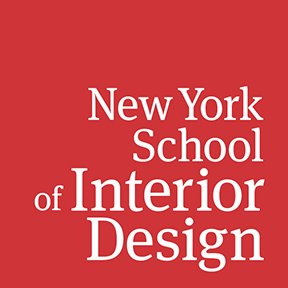The Robert Herring Travel Prize
NYSID’s Travel Award Transforms Interior Designers and Their Designs
Before interior designers can create spaces that enhance well-being, they must observe the different ways people work and live. Travel hones designers’ understanding of the relationship between culture and the built environment, and channels a global perspective into their designs. The family of Joseph Roman understood this when they initiated NYSID’s travel award in 2005.
Joseph L. Roman was a noted interior designer, avid traveler, and NYSID alumnus (BFA ’53), who left a bequest to the College upon his death in 2001. His sister, Theresa Lynch, with additional support from family and friends, worked to develop a travel prize awarded in his name in 2006. That year, Robert Herring, a beloved NYSID instructor and proponent of travel abroad, died suddenly. His students and friends, determined to make the travel prize permanent by establishing an endowed fund in Herring’s honor. All parties agreed to name the award the Robert Herring Travel Prize. Alumni and their families, like Anne and John Duffy, have kept the award active through their endowment gifts and annual contributions.
Since 2006, the College has awarded theRobert Herring Travel Prize to a gifted BFA student each year at commencement. Students apply with carefully considered itineraries and study plans.
Jenny Liang, the 2011 winner, traveled to Southeast Asia to trace her family roots and understand life in Asian cities. She says her travels to Hong Kong, Macau, Thailand, and India completely transformed her idea of what it means to be an interior designer. She was exposed to everything from the modern buildings on Victoria Harbour in Hong Kong to the Taj Mahal in India, an experience that provided her with “a refreshed outlook on design.” She recounts:
The chance to live and breathe these cities truly gave me a better perspective on life as an individual and a designer. I witnessed the effects of how our waste of natural resources is taking its toll on our earth, reinforcing my conviction that designers must be conscious of how our designs affect the earth.
Ho Youn Yi, the 2012 winner, travelled to Korea, Hong Kong, Paris, Rotterdam, Barcelona, Bilbao, and Boston to understand how different cultures perceive and construct walls. He was particularly interested in how walls reflect differences in lifestyle between the East and West. Ho Youn Yi found inspiration in Kyung-Bok Gung, the Korean palace built by the Joseon dynasty, in Seoul. He says:
It is hard to find interior walls in Kyung Bok Gung. The palace has a patio in the middle of the rooms. The door to the patio fully opens so the room can extend into the outdoors. Since the room is located inside the palace, the patio required no additional security and (the rulers) could maintain privacy when they needed it.
Ho Youn Yi was surprised by what he found in Versailles:
Interior walls separated the rooms but there were no corridors, so people would have to walk through the rooms to get to other rooms. With this design, there is little privacy.
Youn Yi, who now works at an architecture firm called JGArchitects, is using his observations on interior walls to inform his designs of public buildings and collaborative workspaces. In his work on a project for the Permanent Mission of Trinidad and Tobago to the United Nations, he is designing interior spaces with walls that allow for privacy, security, and the flow of natural light.
